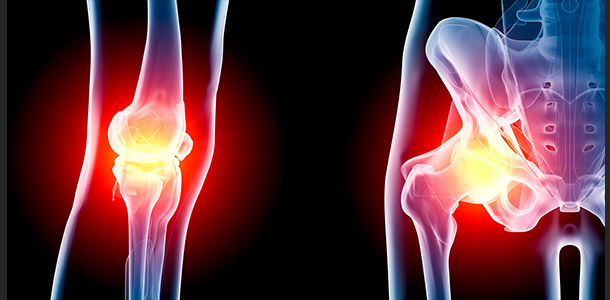Surgical Options for Knee and Hip Pain
More than 15 million Americans suffer from osteoarthritis, according to the American Academy of Orthopaedic Surgeons. This disease, also known as wear-and-tear arthritis, affects the cartilage in joints and may cause pain, stiffness, swelling and a limited range of motion in the knees and hips. It is mostly a condition of aging and is most prevalent in people over 60.
MAKOplasty® for Hips and Knees
Surgeons at the Center for Orthopedic and Spine Surgery at Manatee Memorial Hospital can treat total hip replacement and partial knee resurfacing and by using MAKOplasty®, a highly advanced, precise and minimally invasive surgical system that uses 3D computer imaging. Greater precision during surgery means that patients can have a more natural range of motion, rapid relief from pain, shorter hospital stays and quicker return to daily activities compared to traditional knee replacement surgery. In many cases, patients can walk and drive a car soon after surgery. The MAKOplasty® system uses robotic technology to enable surgeons to operate using precise movements with the help of a robotic surgical arm.
Total Hip Replacement
In total hip replacement surgery, surgeons remove diseased or damaged cartilage and bone in the hip and replace them with artificial implants. During this procedure, the surgeon first removes the femoral head and inserts a stem into the bone with a metal or plastic ball fastened at the top. Then, the damaged cartilage gets scraped from the hip socket and replaced with a synthetic socket. Finally, the new ball implant connects to the new socket implant with a spacer in between to provide a smooth range of motion. Precise placement of the implants is critical to their longevity and can help avoid post-surgery complications.
The steady, robotic arm of the MAKOplasty® system can help surgeons place implants with more accuracy compared to traditional surgery. This may offer the following benefits:
- Restored stability and mobility
- Increased longevity of the implants
- A faster return to daily activities and exercise
Knee Resurfacing Surgery
If you suffer from osteoarthritis in the inner, top or outer knee compartments, you may qualify for knee resurfacing surgery. Generally, this becomes an option once non-surgical treatments or medication are not working. During resurfacing, surgeons shave away diseased or damaged parts of the knee without replacing the knee entirely. Instead, they insert artificial implants to relieve arthritis in a specific compartment of the knee.
In the past, knee resurfacing surgery was difficult to perform due to a lack of precision in placing the implants. Today, the MAKOplasty® system gives surgeons the accuracy they need to carefully position implants to give the knee a natural range of motion. Using this technology, surgeons can also selectively target the affected areas while preserving healthy bone, tissue and ligaments. Protecting the healthy parts of the knee makes it possible to receive total knee replacement surgery later in life, if necessary.
Because of the minimally invasive nature of the procedure, patients may benefit from:
- Smaller incisions than standard surgery
- Reduced blood loss
- Less scarring
- Faster recovery and shorter hospital stay
Watch a video about MAKOplasty® Partial Knee Resurfacing:
Rehabilitation Services
Manatee Memorial Hospital offers a wide range of rehabilitation therapies, including physical therapy for post-surgical conditions.
Individual results may vary. There are risks associated with any surgical procedure. Talk with your doctor about these risks to find out if MAKOplasty® is right for you.


